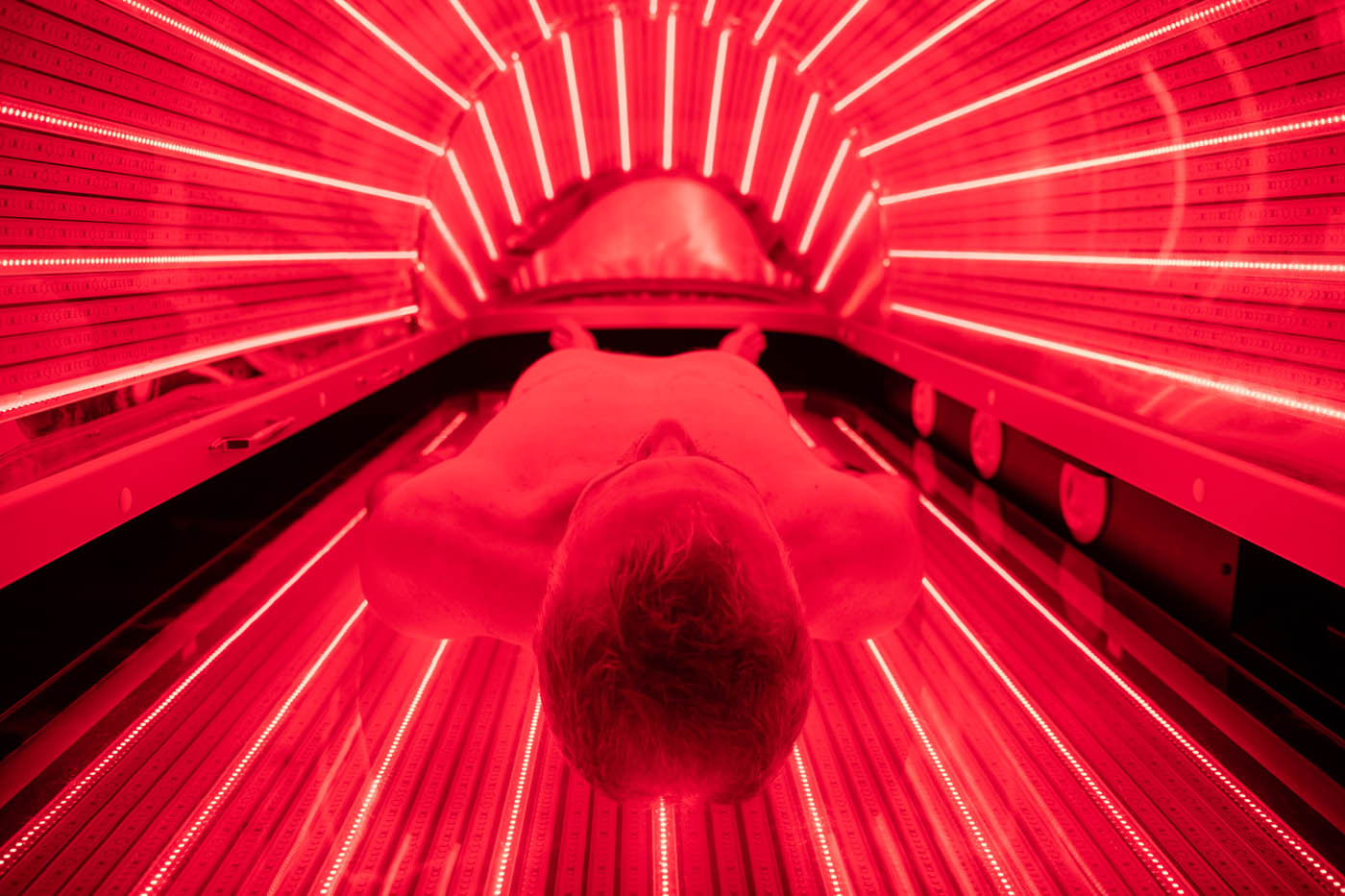The longevity space and biohacking world is full of supplements and modalities that are supposed to help us live longer and healthier. Some may be hype, some may not work at all, but one of our favorites, and one that has been heavily studied, is red light therapy. Red light therapy (RLT), also known as photobiomodulation, uses specific wavelengths of 630–680 nm (red) and 800–850 nm (near-infrared) light to energize cells, support healing, and reduce inflammation, all without heat or damage. There are many different types of red light therapy such as beds (similar to a tanning bed but without the cancer-causing UV light), panels that you can stand in front of, and many smaller devices for individual areas such as face masks or joint wraps. Many of these devices are FDA cleared and post little or no risk, but have many potential benefits. Treatment times vary anywhere from 5-25 minutes 3-5 times per week; consistency is important for results. Here are some of the wide-ranging health benefits of red light therapy.
1. Healthier, Younger-Looking Skin
Red light stimulates your skin’s mitochondria, the “energy centers” of your cells, to boost collagen and elastin production. This improves texture, firmness, and reduces fine lines. It has also been shown to reduce dark spots and discoloration.
2. Faster Muscle Recovery & Less Soreness
Red light therapy helps muscles recover faster by reducing inflammation and oxidative stress while improving circulation.
3. Pain & Inflammation Relief
Red and near-infrared light can reduce acute and chronic pain by calming inflammatory molecules and improving tissue repair. Studies have shown that it is effective in decreasing arthritis and tendon pain as well as overall joint stiffness.
4. Faster Wound & Tissue Healing
Red light therapy accelerates healing by promoting new blood vessel growth (angiogenesis) and faster collagen remodeling. Strong evidence supports its use for surgical wounds, burns, and chronic ulcers.
5. Sharper Brain Function & Protection
Near-infrared light can penetrate the skull and enhance brain energy metabolism. It’s being studied for cognitive decline, traumatic brain injury, and mental clarity. Recent research shows improved memory, focus, and mitochondrial activity in the brain.
6. More Overall Cellular Energy (Mitochondrial Health)
At the core of red light therapy’s benefits is its effect on mitochondria. Red and near infrared light help your cells make more ATP (energy), reduce oxidative stress and enhance cellular repair.
Red light therapy isn’t just hype; it’s backed by growing clinical research. From smoother skin and stronger muscles to better brain and mitochondrial health, it helps your body heal and perform better at the cellular level.
Resources:
Transcranial Near Infrared Light Stimulations Improve Cognition in Patients with Dementia – PMC



Leave A Comment